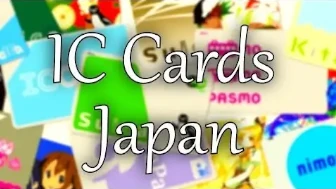What are they?
They are rechargeable cards which can be used to pay for trains, busses, some vending machines and even in some shops. From my own experience, I can confirm that it’s possible to pay in most convenient shops with them.
They are prepaid and require no pin code, which makes it dangerous to load up a lot of money on it, because if you lose it, your money is gone as well.
Also, don’t forget that the card itself also costs some money, 500 Japanese Yen to be exact. This money is however refundable if you return the card at the end of your trip, but you can also keep it for next time or as a nice souvenir.
Do you need one?
If you will be traveling in Japan and be taking a lot of trains then I really recommend it. Unless you buy the foreign pass which gives you unlimited access to trains for a certain amount of days.
They are a lot more convenient than looking at the boards with all the station names which are connected by colorful lines. Saves a lot of time, but the downside is that it can be a bit too convenient. With that I mean, you will start taking trains for even the shortest distances because of how easy it is.
But small amounts add up to a big total overtime, my second time in Japan I noticed this very clearly as I burned through almost 100 euro within a month for transport alone! I was actually traveling big distances as well at the time.
A short description: Fast, Convenient, Tap & Go!
Where can I get one?
You can reserve one through the site of JR, or when you land in Japan, just go to the machine to get train tickets, press English and follow the instructions which you will get after pressing “Icoca”. I say Icoca but that’s the name it has in the Kansai area, the name changes by region but they work everywhere.
Different names
Remember that even though they have different names, they work naywhere in Japan!

Suica is the prepaid IC card for JR trains in:
- JR East;
- Greater Tokyo;
- Niigata;
- Sendai.

Pasmo is the prepaid IC card of Tokyo’s railway, subway, and bus operators other than JR. A special version of Pasmo, called Pasmo Passport, is available to foreign tourists. The special cards are valid for only four weeks, come without a deposit fee, but do not allow for refunds.

Icoca is the prepaid IC card of JR West for JR trains in the Kansai (incl. Osaka and Kyoto), Chugoku and Hokuriku regions. The Kansai One Pass is a special version of Icoca exclusively for foreign tourists that additionally qualifies for discounts at various attractions in the Kansai Region.

Pitapa is the IC card of the Kansai Region’s railway and subway operators other than JR. Unlike the other nine cards, Pitapa is a postpaid rather than a prepaid card and not easily available to foreign tourists.

Toica is the prepaid IC card by JR Central for JR trains in the Greater Nagoya area and some parts of Shizuoka Prefecture.

Manaca is the prepaid IC card of Nagoya’s train, subway, and bus operators other than JR and Kintetsu.

Kitaca is the prepaid IC card by JR Hokkaido for JR trains in the Greater Sapporo region. It can also be used on Sapporo’s subways, buses, and tram.

Sugoca is the prepaid IC card of JR Kyushu for JR trains in the Greater Fukuoka, Kumamoto, Kagoshima, Oita, and Nagasaki regions.

Nimoca is the prepaid IC card of Nishitetsu for Nishitetsu trains and buses in Greater Fukuoka and selected transportation in other cities on Kyushu and in Hakodate.

Hayakaken is the prepaid IC card of Fukuoka City for the Fukuoka Subway.
Quick note:
When leaving Japan, you can take the card with you and give it to a friend who will go to Japan. The card isn’t bound to you by any information, so it’s easy to just give around when people need it. You can however not use one card when you are with a group and taking the train at the same time. Everybody will need to use their own card when riding together.
